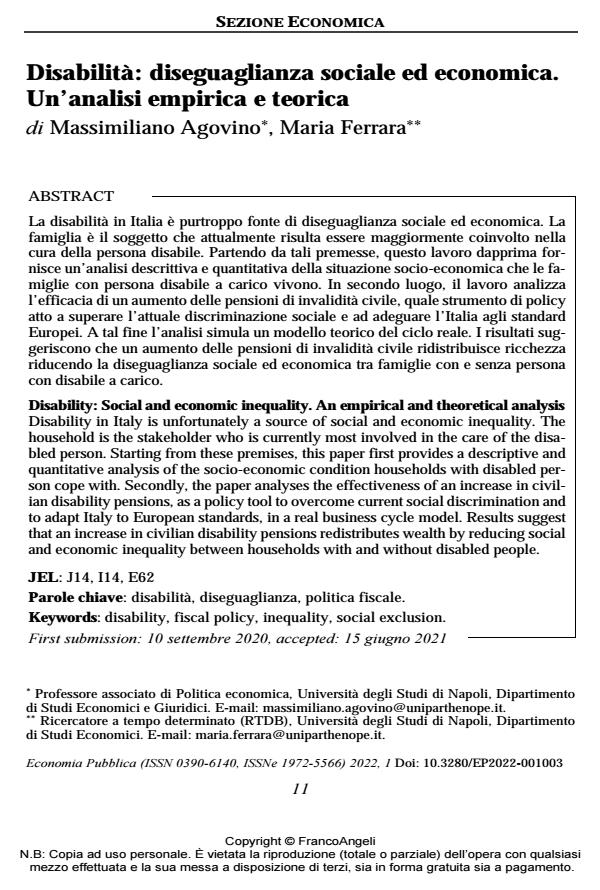Disability: Social and economic inequality. An empirical and theoretical analysis
Journal title ECONOMIA PUBBLICA
Author/s Massimiliano Agovino, Maria Ferrara
Publishing Year 2022 Issue 2022/1
Language Italian Pages 32 P. 11-42 File size 339 KB
DOI 10.3280/EP2022-001003
DOI is like a bar code for intellectual property: to have more infomation
click here
Below, you can see the article first page
If you want to buy this article in PDF format, you can do it, following the instructions to buy download credits

FrancoAngeli is member of Publishers International Linking Association, Inc (PILA), a not-for-profit association which run the CrossRef service enabling links to and from online scholarly content.
Disability in Italy is unfortunately a source of social and economic inequality. The household is the stakeholder who is currently most involved in the care of the disabled person. Starting from these premises, this paper first provides a descriptive and quantitative analysis of the socio-economic condition households with disabled person cope with. Secondly, the paper analyses the effectiveness of an increase in civilian disability pensions, as a policy tool to overcome current social discrimination and to adapt Italy to European standards, in a real business cycle model. Results suggest that an increase in civilian disability pensions redistributes wealth by reducing social and economic inequality between households with and without disabled people.
Keywords: disability, fiscal policy, inequality, social exclusion
Jel codes: J14, I14, E62
Massimiliano Agovino, Maria Ferrara, Disabilità: diseguaglianza sociale ed economica. Un’analisi empirica e teorica in "ECONOMIA PUBBLICA " 1/2022, pp 11-42, DOI: 10.3280/EP2022-001003